Phil Hardman treads carefully among the trees on the hunt for woodpigeon
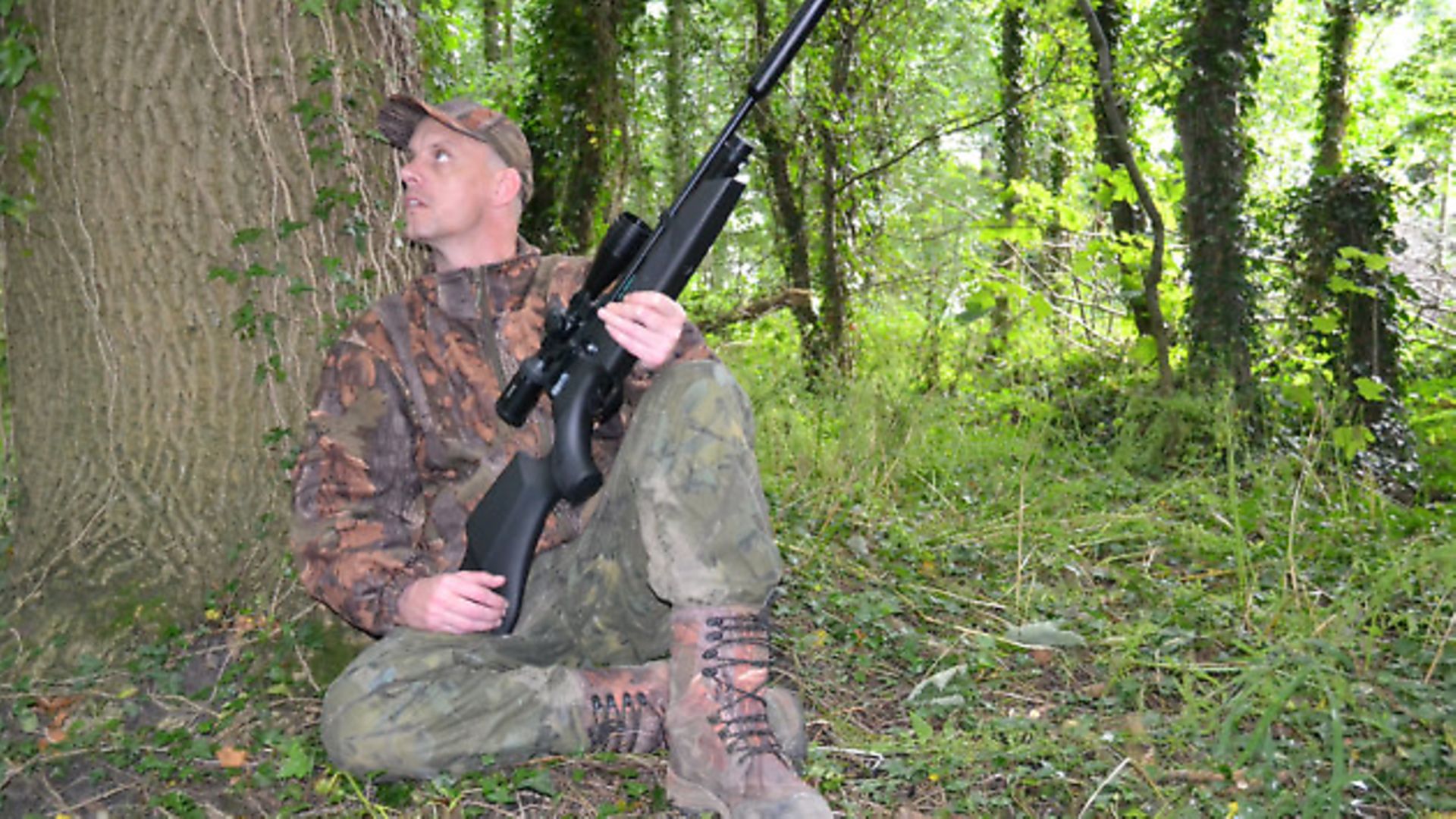 credit: Archant
credit: Archant
Changeable weather makes planning any sort of organised hunting trip all but impossible. Sunny, warm days will see nature behaving in one way, which will be completely different to the next, when there are torrential downpours and high winds.
Recently, predicting which pattern of behaviour you’re going to see is as difficult as predicting the weather itself. It means I’ve been just going with the flow on the day and trying to make the best of it, but I can’t help feeling I have spent most of my time playing catch-up. As I’ve mainly been distracted by rabbits lately, I’m neglecting my woodpigeon culling duties somewhat, especially compared to normal years, so I decided to try to make a start in the old woodland that sits on the very southern edge of my permission.
I generally use the summer to catch the birds at their most vulnerable, while they’re at rest in the woods, pairing up, breeding, or nesting. I can eradicate not just the birds I shoot, but any potential offspring they would have produced before harvest time, when the crops get hit en masse by flocks numbering in the thousands. They can can leave whole field decimated just as they’re about to be cut, costing farmers thousands of pounds.
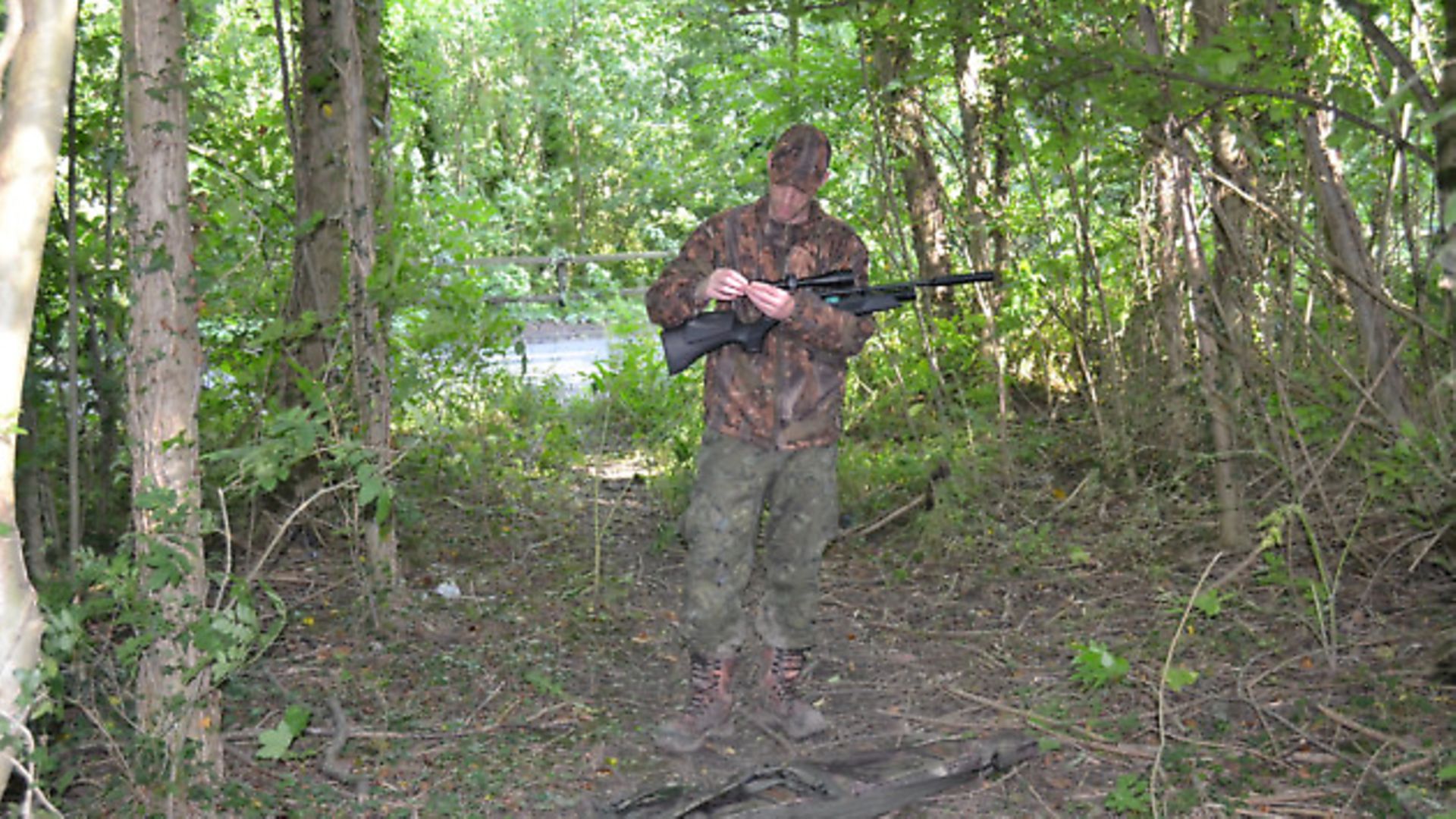 credit: Archant
credit: Archant
Decisions, decisions
This hunting trip began like most do these days, with me deciding on my rifle. I am still not used to having a choice, preferring to own one rifle at a time for most of my hunting life. But now, my collection consists of three guns, all .177 Weihrauchs, an HW110, a 100, and an HW95K.
The ‘95 hasn’t seen much use really, with me instead taking either the 100 or the 110. Both are cracking rifles, easily more accurate than I am, and both work really well. The 110 is lighter and shorter, but the 100 is mine – as in, I’ve had it the longest, bonded with it, have the most memories of past hunts, which for me, counts for a lot.
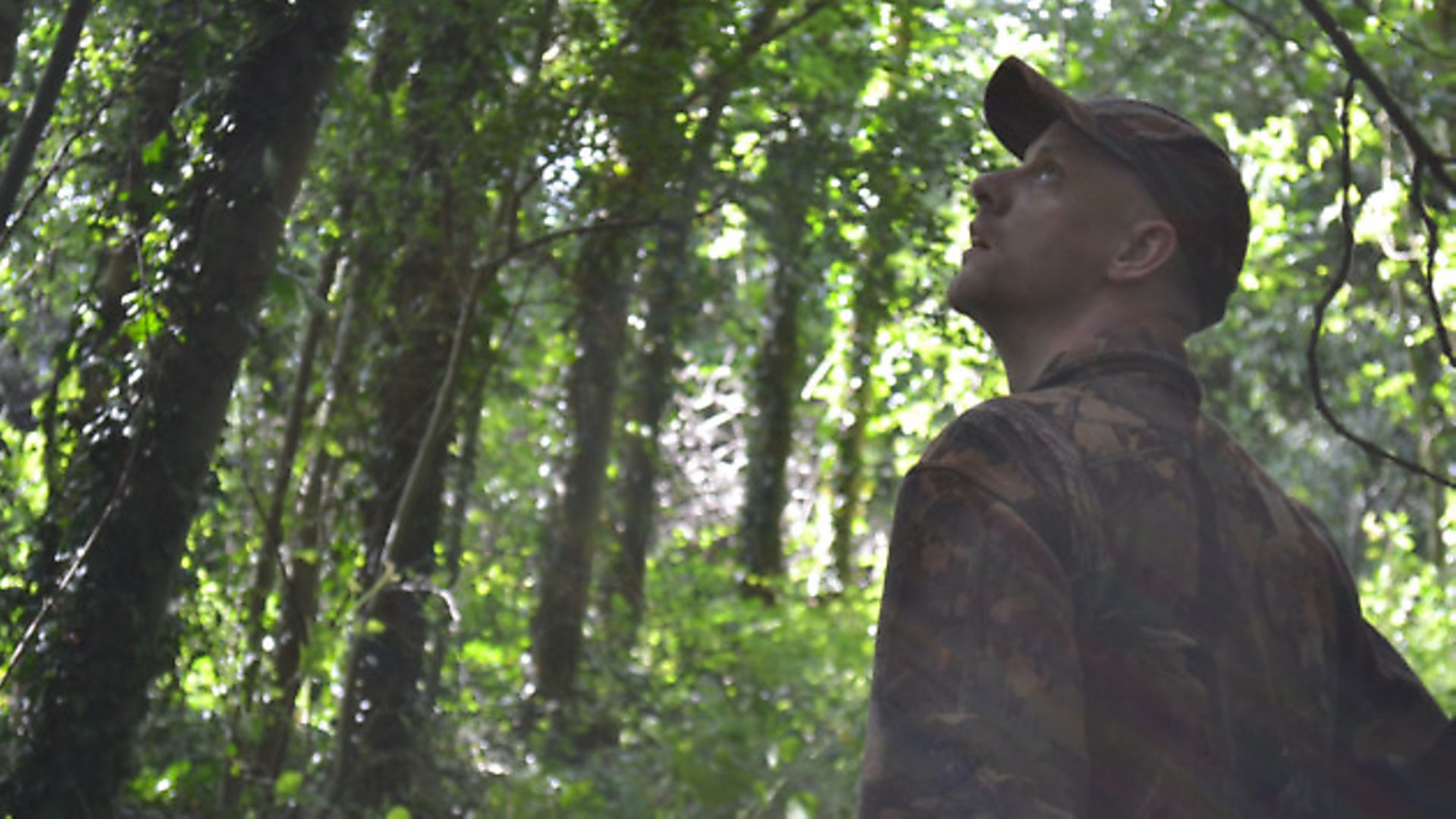 credit: Archant
credit: Archant
So the battle really has often come down to what sort of shooting I am doing, with me finding excuses to use each gun, and sometimes both on the same trip. This time, the HW110 won out simply because in the woods, the lighter weight and extra pointability meant I could manoeuvre around the foliage easier and would help with elevated shots.
Into the woods
I removed the rifle from its case and stood silently, loading up the 10-shot magazine before sliding it into the breech. I always take a minute or two just to stand there when I first enter the woods. Any animals in the immediate vicinity will have known you’re there, so will be stationary and alert. You will spook them if you do anything straight away, but give them a minute to settle and they may think the danger has passed.
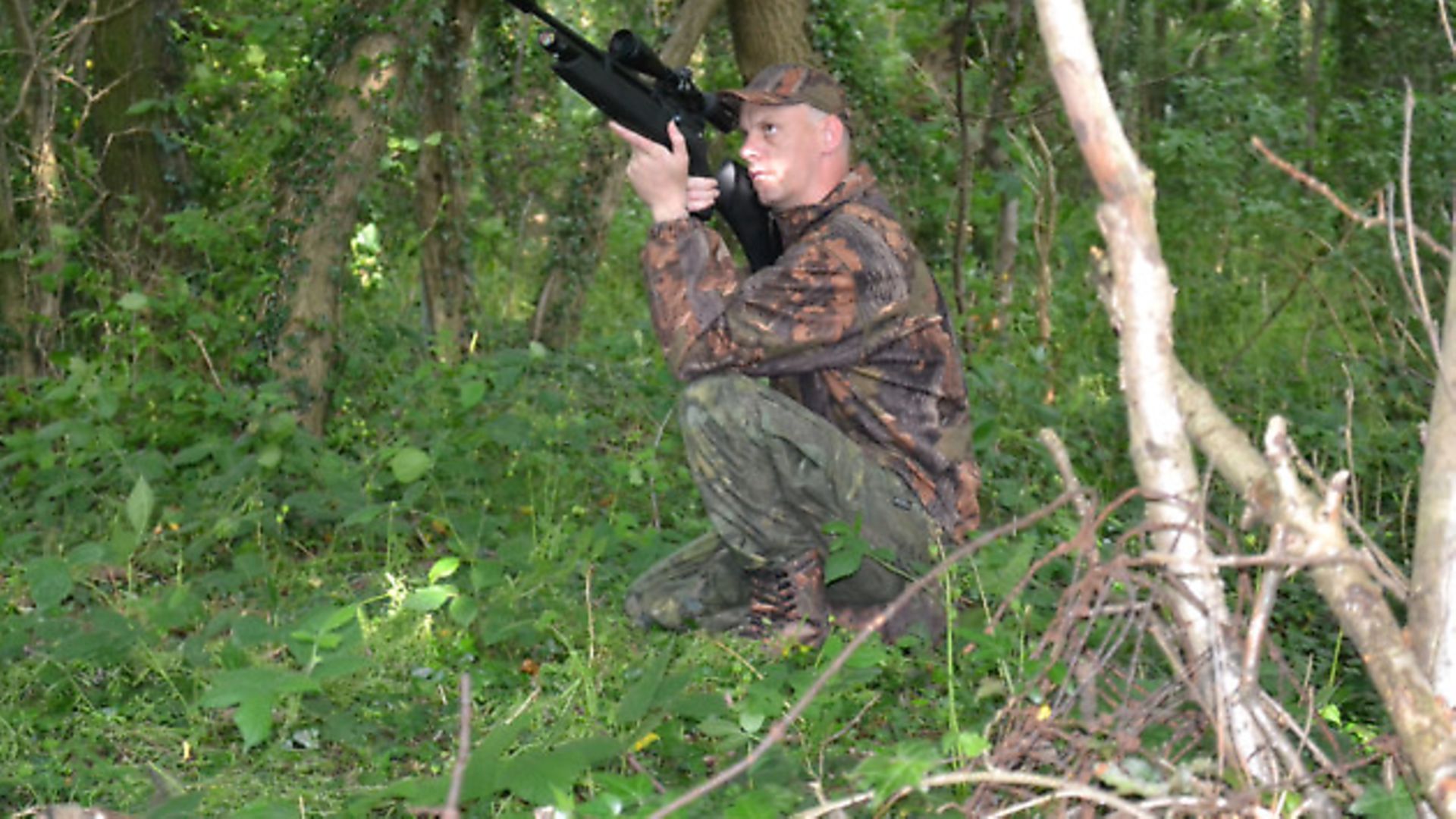 credit: Archant
credit: Archant
That’s basically what woodland stalking is about in the summer, gaining that advantage if you can. With so much cover around and so many leaves on the trees, it means we can’t see the birds or squirrels easily, but they also have a seriously hard time looking down through thick canopies and over large areas of ground cover to spot us too.
So it comes down to a simple fact – if you move, you lose!
Eyes and ears
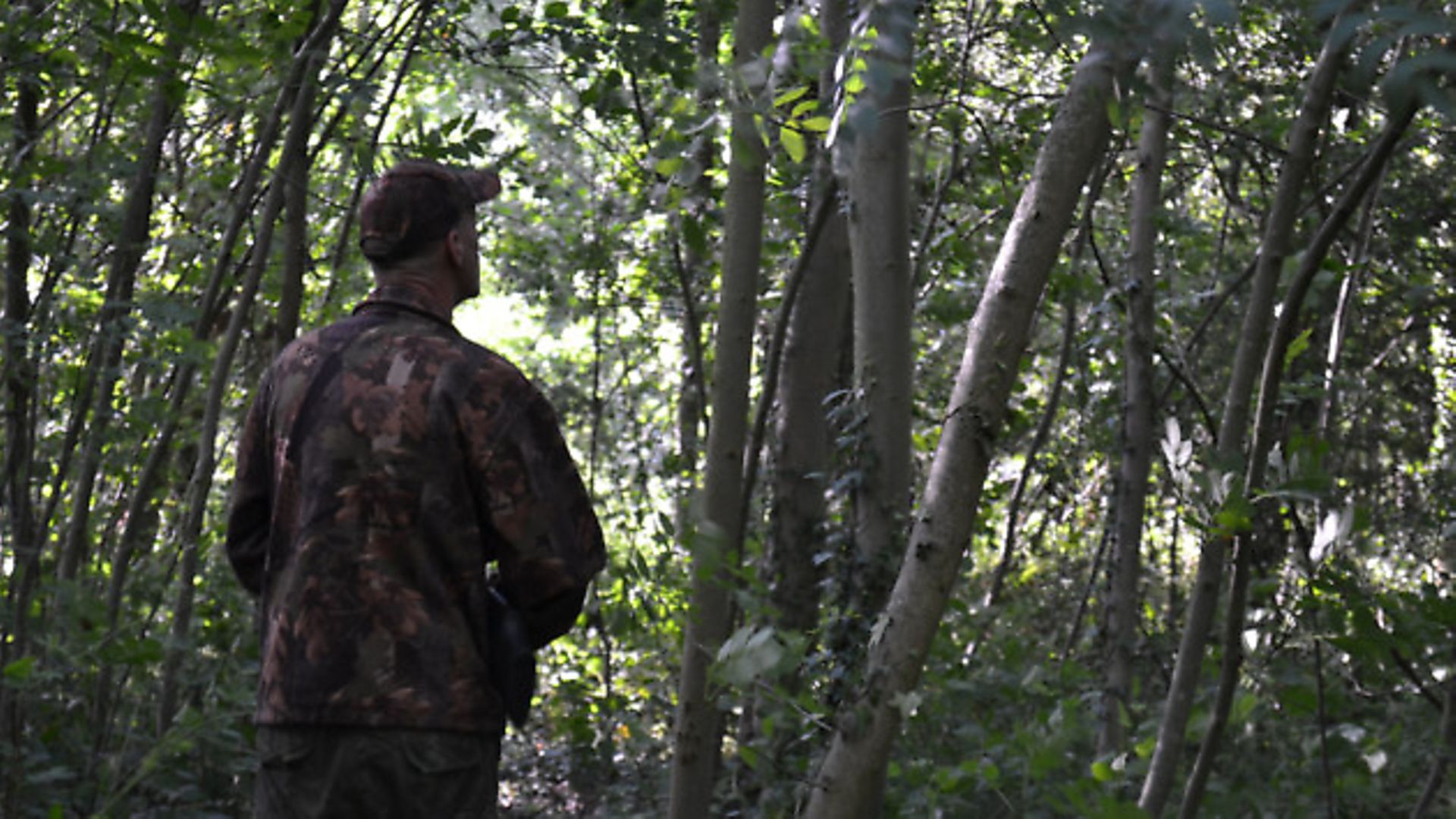 credit: Archant
credit: Archant
Moving without being seen or heard is the key. In thick woodland, animals tend not to run unless they know what they’re running from. Even pigeons will sit longer in thick woods than they will in more open areas. If they can’t be 100% sure what they are fleeing from, then how do they know they aren’t fleeing toward it?
Nothing will give you away quicker than stepping on a twig and snapping it. Every pair of eyes in the area will go searching for the source of the sound, and that’s when you’re seen, and game over.
I use well-worn tracks running through the woods to try to cut down on noise. But don’t be too hard on yourself if you do make a mistake and step on something, just freeze, stay put for a couple of minutes, then continue. When the woods are full of calling woodpigeons and other noisy creatures, you can actually take liberties with how much noise you can make and get away with it.
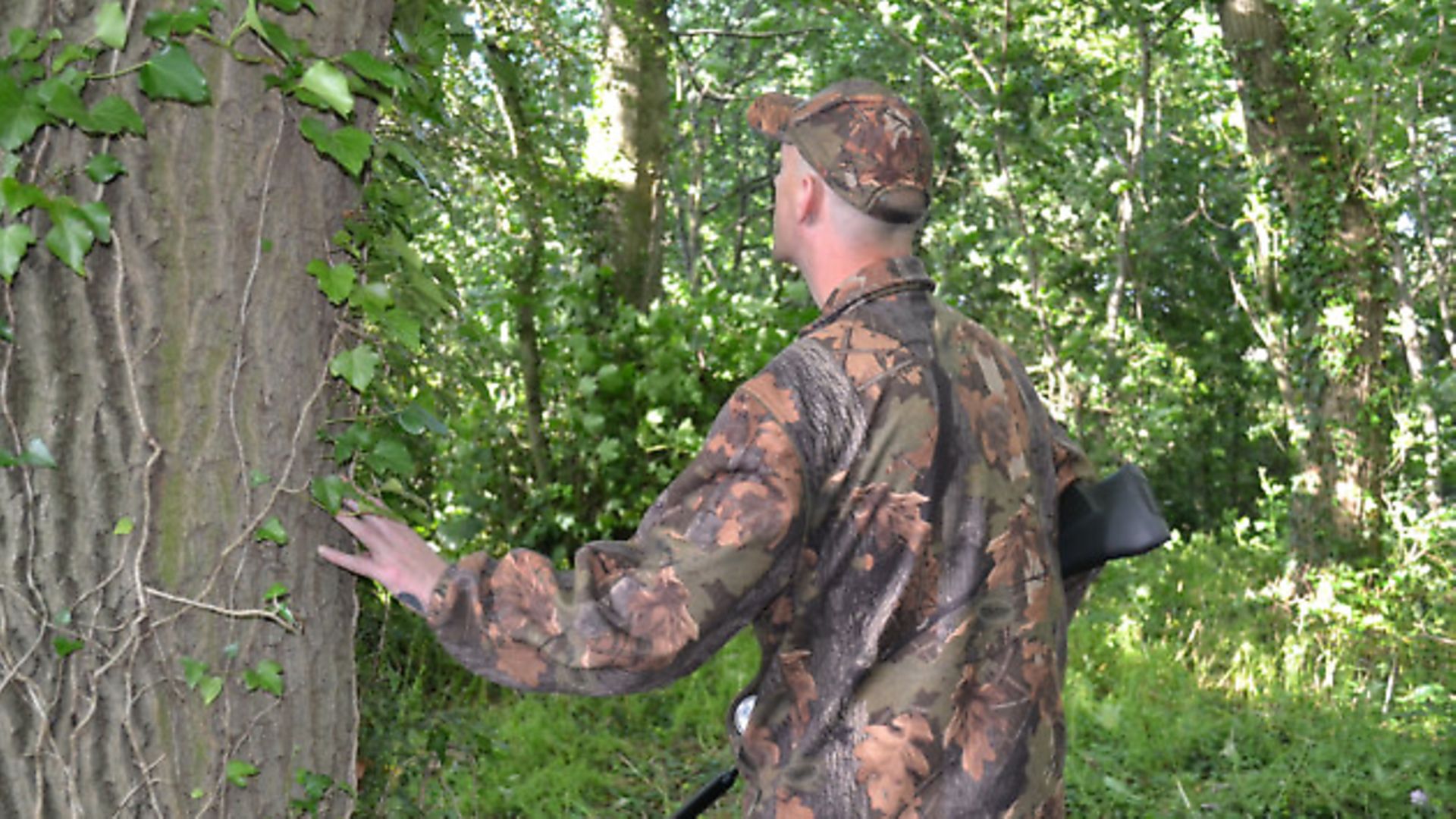 credit: Archant
credit: Archant
So after waiting for things to settle, I stashed my gun-bag under a fallen tree branch and set off, slowly picking my way through the trees, being careful not to make any sounds as I moved deeper into the wood.
When you’re stalking like this, you’re hunting in a truly three-dimensional world, with the next chance coming from any angle and any direction, so you have to keep your wits about you. Most of my time is spent scanning treetops, then down to the ground, and back up, but all the time moving forward. I don’t get much chance to look where I’m putting my feet.
I ‘roll’ my feet as I go, from heel to toe as they touch down, slightly turned so it’s the outside edge that presses the hardest onto the ground. This way I can feel what’s underfoot before I add pressure, and I can adjust my footing before I apply my full weight.
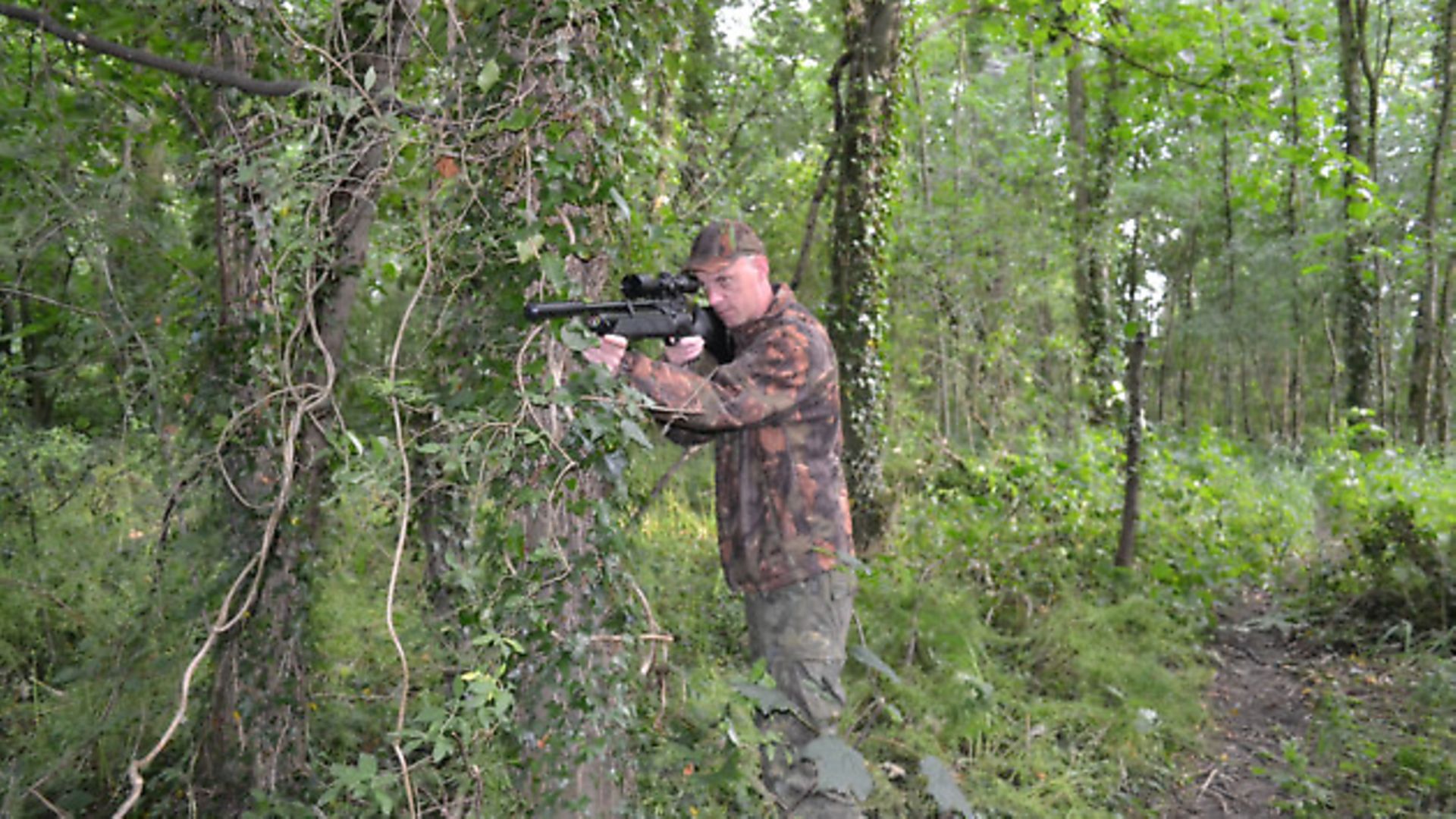 credit: Archant
credit: Archant
Slow going
It was extremely slow going, but this kind of hunting always is. Sometimes covering as little as 100 yards can take an hour, depending on what’s around.
I could hear plenty of ‘cooing’ woodies to keep me occupied, as I moved at a snail’s pace. Knowing birds are there is one thing, spotting them is another thing entirely. After identifying the general location of the closest bird, I moved under the tree I guessed it was perched in, and stood scanning every branch and leaf looking for a sign, anything, a tail feather, something to stand out and let me identify it. Over 10 minutes passed, I knew it was up there, but I still couldn’t see it.
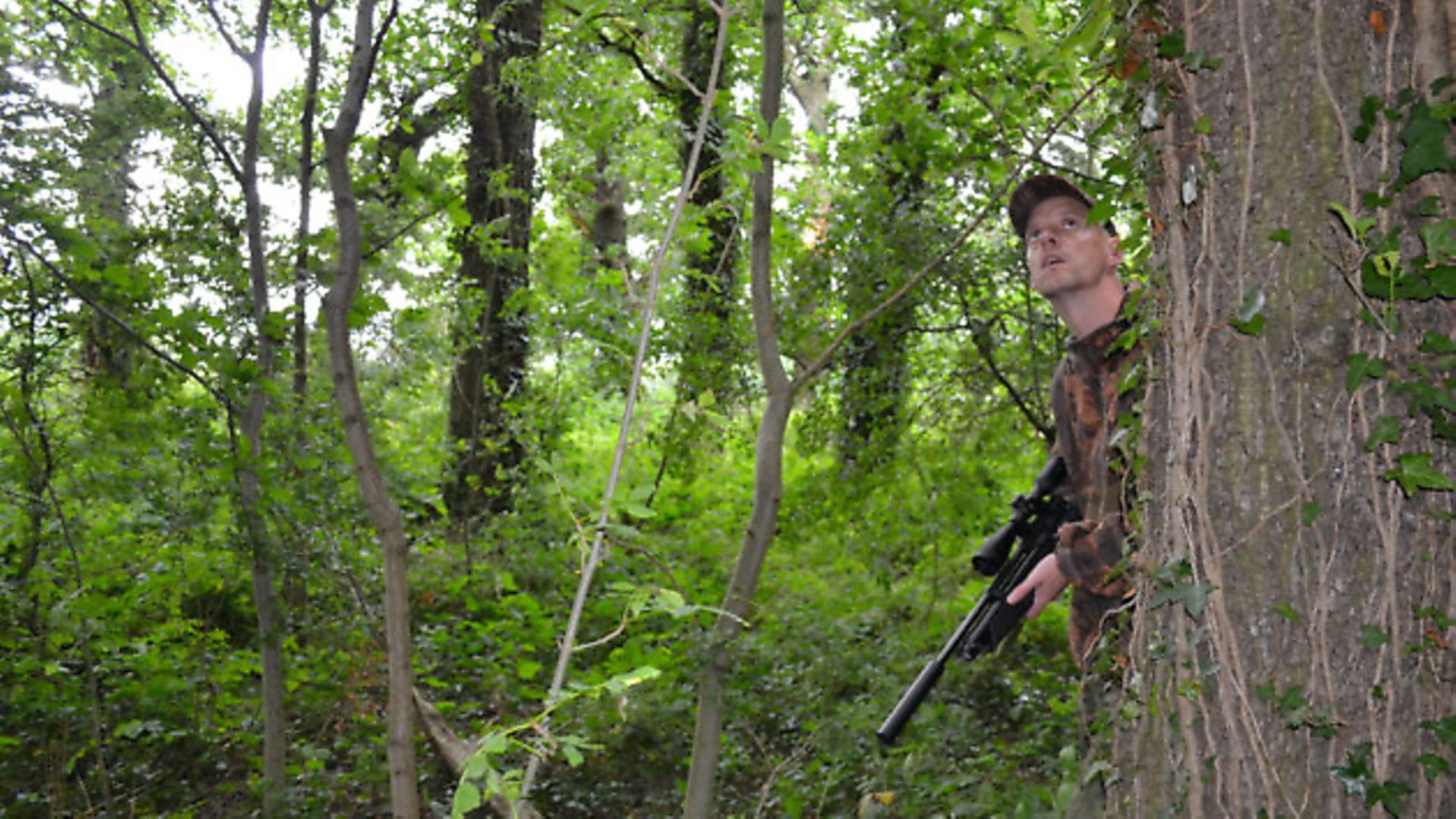 credit: Archant
credit: Archant
I was just about to give up and slink silently past, hoping the next tree might reveal something, when a shadow went over the top of the leaves above me signalling the arrival of another pigeon. I held position against the trunk of the tree, waiting to see where the woodie was going to touch down, then got the rifle ready and up in my shoulder as it arrived on a high perch near the top of the oak.
I braced myself against the thick tree trunk and lined up the scope’s reticle at the base of the bird’s cranium, allowing just a tad of holdunder to account for the elevation of the shot. As I slipped the trigger, I saw a small puff of feathers as the bird reeled backwards off its perch and tumbled, end-over-end, wings flapping all the way to the ground. Above me, the other bird burst out of its hiding spot, finally revealing what I had guessed all along. I had picked the right tree, I just couldn’t see my target.
I left the bird in a fork of a small sapling to collect on my way back and continued on my way. It’s funny, I had set off in search of pigeons and managed one so far, but my mind had wandered onto squirrels and I was really hoping I’d encounter one to start off a mixed bag.
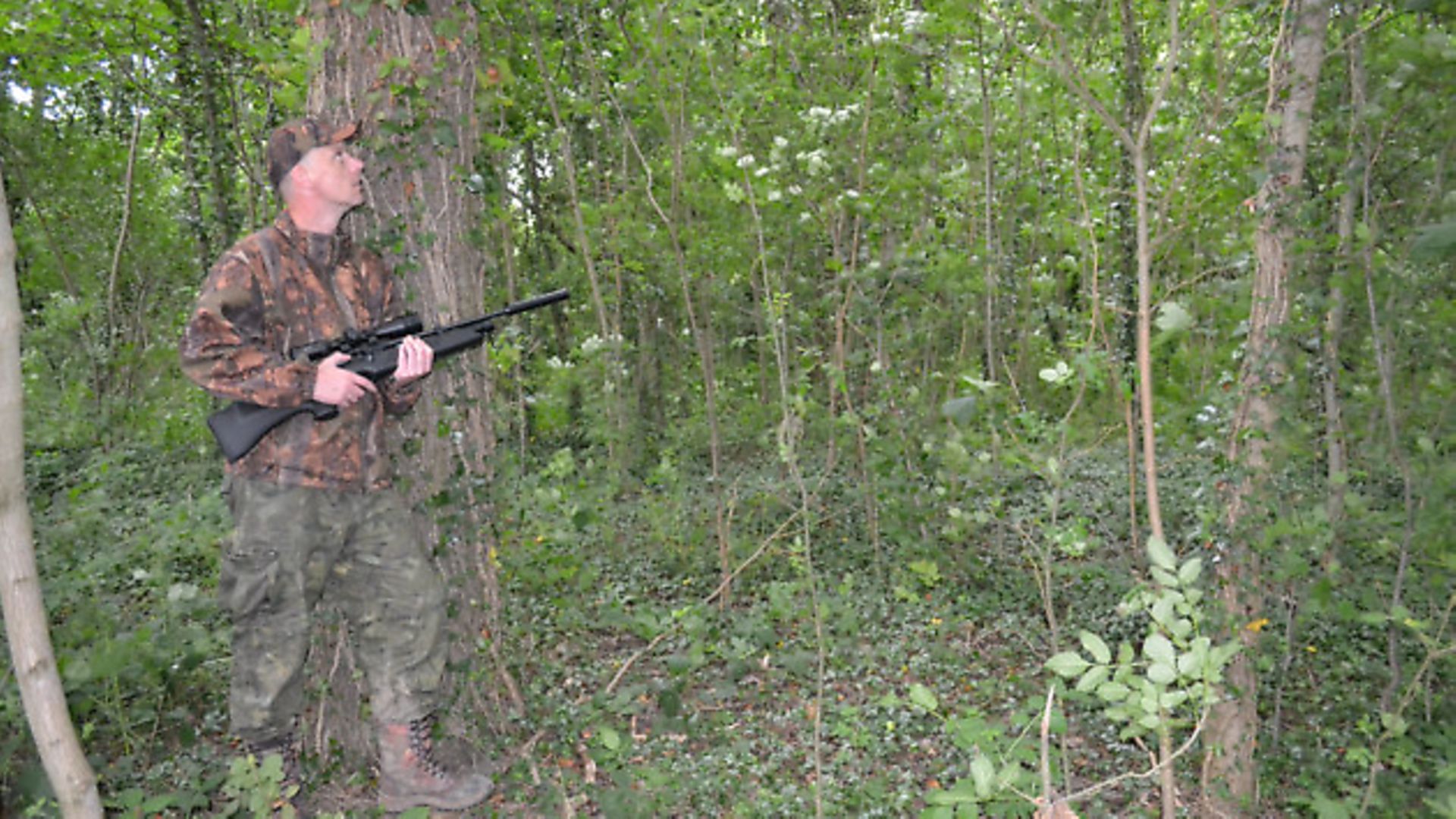 credit: Archant
credit: Archant
The next 20 minutes was spent moving further into the wood. I did catch a glimpse of what looked like a squirrel’s tail on an ivy-covered tree trunk, but by the time I had even paused it had disappeared. My next real chance came at a carrion crow sitting out in the horse paddock at the edge of the wood. Unfortunately, I misjudged the wind, which I couldn’t feel within the shelter of the trees, and I completely fluffed it, sending the pellet wide by what seemed like a mile.
Move on from mistakes
Trying my best to shrug off what should have been a pretty easy kill, I moved on. No matter how stupid a mistake you make, how far you miss by or how badly you fluff a shot, the best thing you can do is try to forget it - we all miss.
I made a sort of loop through the wood, heading along one side, and then across and back the other side to return to where I started. I managed to bag another pair of woodies on the return, one falling to an easy 20-yard shot when it flapped down and settled on a low branch, a shot between the shoulder blades dropping it stone-dead. The second was a longer shot, nearer 40 yards, which fully restored my confidence after the earlier miss.
Confidence counts for so much when it comes to marksmanship, not just in your kit, but in your ability. Although it can take many days and weeks, even months, to build, it can be eroded quickly.
I arrived back and collected my gun bag, emptied the rifle and put it away, and took two steps forward as a grey squirrel ran up a sapling right in front of me, 15 yards away, and just sat there staring at me. Typical! I won’t let it get away with that, make no mistake, I will be back!
__________________
You may also like:
5 Top Hunting Tips
Camouflage: Jack Pyke’s LLCS
Top Hunting Tips: Every step you take…
Hunting for grey squirrels
Top Tip: Slowly does it